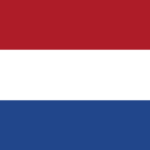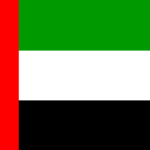PESTEL analysis of the European Union (EU)
This detailed PESTEL analysis of the European Union (EU) aims to explore some of the political, economic, social, technological, environmental, and legal factors affecting the European Union today. The European Union is the result of the European Economic Community (EEC), created in 1958. The EEC’s aim was to increase economic cooperation between six countries: Belgium, Germany, France, Italy, Luxembourg and the Netherlands.
Political factors affecting the European Union (EU)
The European Union is an economic and political union between 27 countries i.e. Austria, Belgium, Bulgaria, Croatia, Cyprus, Czechia, Denmark, Estonia, Finland, France, Germany, Greece, Hungary, Ireland, Italy, Latvia, Lithuania, Luxembourg, Malta, Netherlands, Poland, Portugal, Romania, Slovakia, Slovenia, Spain, and Sweden (EU, 2019). The United Kingdom left the block recently that created severe implications for both the EU and the UK.
There is no doubt that peace in Europe is the origin of the European Union as the continent was devasted by the Second World War. The Union has been largely successful in achieving the aim. It has also become a global actor and has influences on global economy and politics. It works with other major world powers and plays a very important role to encourage democracy, freedom, peace, and security at global levels. The EU maintains very good relations with the United States; however, many analysists argue that the US prefers a weak and divided Europe (Nougayrede, 2019).
There are many Eurosceptics in Europe who are more comfortable with national politics, law, and economy rather than those of the EU. It is evident from the referendum results in the UK that triggered Brexit. Likewise, many Eurosceptic parties have emerged across the EU over the years, although not all would like to have a Brexit-style departure from the Union (France24, 2019).
Some people question the legitimacy of the EU and call it undemocratic. They point to the EU Commission (the EU’s executive body) whose President and Commissioners are not directly elected by the people of the Union. They also point to the Commission’ solo right to propose EU legislation. However, others argue that although the European Commission is not elected, it is fully accountable to the European Parliament. Likewise, the European Parliament is made up of MEPs from all 27 EU member states (Philip, 2016).
Joining the EU as a member state is an extremely time-consuming and complicated process. Currently, there are five countries negotiating with the EU over their accession to the Union. These countries are Albania, Montenegro, North Macedonia, Serbia, and Turkey. However, Turkey’s bid to join the EU is yet to see any significant progress.
Economic factors affecting the European Union (EU)
The European single market is one of the greatest achievements of the EU. It accounts for approximately 500 million consumers (EU, 2020). It aims to break down all the barriers to business in the member states by ensuring four freedom i.e. free movement of goods, services, capital, and labour. However, the free movement of people has been the most controversial issue and drawn widespread criticisms from Eurosceptic political parties, and many others.
The single market has been very effective not only because of its size, but also for removing tariffs and reducing administrative liabilities with the application of one set of rules across all the participating member states. However, the lockdowns in 2020/21 destroyed many businesses and many critics argue that the Union’s approach to deal with it has not been effective.
The Gross Domestic Product (GDP) in the EU in 2019 was around $16 trillion with Germany, France, and Italy being the major economies. The EU is the top trading partner for 80 countries. It also worth mentioning that some critics believe it favours the larger member states at the expense of the smaller ones.
The euro is the official currency for 19 of the 27 EU member countries. These 19 countries with approximately 340 million people collectively make up the euro area which is also known as the eurozone. The euro was introduced in 2002, and the symbol is €. The euro is one of the most widely used currencies in the world. It is managed by the European Central Bank. It is worth mentioning that euro zone crisis, also known as the European debt crisis, has been affecting a number of member states since 2009.
The EU has signed free trade agreements with a number of countries over the years. This enables its member states to trade with those countries without having to pay taxes on imports (tariffs) on most of the goods. The EU has 40 free trade agreements, that cover more than 70 countries (Edgington, 2020).
Social factors affecting the European Union (EU)
Europe has a shared and rich cultural heritage and the EU works to support and preserve it. The citizens of the member states can travel, work, and settle in anywhere within the EU. This helps them deepen their mutual relationship and learn and benefit from different sub-cultures. Most students in the EU learn a foreign language in school, while 100% students in Luxembourg, Malta and Liechtenstein are reported to be learning a foreign language.
The EU is rich and diverse in sports. Football is the most popular sport; however, basketball, cricket, tennis, athletics, rugby, Formula 1, ice hockey, and volleyball are also very popular. Germany, France, and Italy are some of the greatest nations in football. Other EU giants in football are Portugal, Netherlands, and Spain.
However, the EU is currently facing a number of social challenges. For example, female employment rate is far below than that of men in many member states. Family responsibilities and poor provision of or unavailable childcare usually affect female employment (Schmidt, 2019).
Likewise, youth unemployment, ageing population, income and wealth inequality, inefficiencies in hospital care, higher pharmaceutical spending and unemployment of locals are some other problems facing the EU. According to some critics, low-skilled migrants from poor EU member states impact on the employment opportunities for local people in highly developed economies such as Germany and France.
Technological factors affecting the European Union (EU)
As stated above, the EU is a global actor, and has done excellent in many areas including science and technology. In fact, Germany, Sweden, Finland, and France are some of the most technologically advanced countries in the world. By any measure, the EU is a scientific powerhouse and has contributed immensely to science and technology.
However, the EU’s technology and IT sector falls behind economic powerhouses such as the USA, and China. The EU also suffers from a lack of IT skilled work forces. Companies such as Apple, Alphabet, Alibaba, Amazon, Baidu and Tencent are either from the USA or China. The EU needs similar companies of its own. In fact, it really needs to speed up in the artificial intelligence revolution.
Environmental factors affecting the European Union (EU)
There is no doubt that some of the most beautiful cities in the world are located in the EU. Indeed, France, Germany, Italy, and Spain are some of the most visited countries in the world. Tourism plays an important role in the EU GDP. For instance, it’s contribution to the EU GDP was 9.5% in 2019 and accounted for approximately 22.6 million jobs (World Travel & Tourism Council, 2020).
However, the EU faces some enormous environmental challenges. For example, air pollution is the biggest environmental risk to public health in Europe causing an estimated 400,000 premature deaths a year. And alarmingly, most of the EU member states have failed to meet air quality standards and the measures taken by the European Commission against countries branching emissions limits have not been effective either (Cockburn, 2018).
Other notable environmental challenges facing the EU are climate change, stratospheric ozone depletion, loss of biodiversity, major accidents, acidification, deterioration of habitats and water pollution, forest degradation, and chemical risk.
Legal factors affecting the European Union (EU)
The last element to address in the PESTEL analysis of the European Union (EU) is the legal landscape of the union. It is worth mentioning that addressing the legal environment in detail is beyond the scope of this article; hence a very limited discussion. The EU has its own legal system. It is separate from international law and highly respected in the member states. It overrules the national law of each member country if there is a conflict between the national law and the EU law.
A uniform application of EU law means laws are consistent in their interpretation and application, and are more accessible, understandable and transparent. However, many Eurosceptics oppose the dominance of the EU law over their national laws.
We hope you like the article ‘PESTEL analysis of the European Union (EU)’. You may also like reading PESTEL analysis of Turkey and Types of economy (economic systems). Other relevant articles for you are:
Advantages and disadvantages of a private limited company
Positive and negative impacts of tourism
If you liked any of these articles, please feel free to share with others by clicking on the icons provided.
Last update: 06 April 2021
References
Cockburn, H. (2018) Air pollution now ‘biggest environmental risk’ in Europe, EU auditors find, available at: https://www.independent.co.uk/environment/air-pollution-europe-uk-eu-commission-court-health-who-toxic-environment-a8533061.html (accessed 14 September 2019)
Edgington, T. (2021) Brexit: What trade deals has the UK done so far? available at: https://www.bbc.co.uk/news/uk-47213842 (accessed 06 April 2021)
EU (2020) About the EU, available at: https://europa.eu/european-union/about-eu_en (accessed 06 April 2021)
France24 (2019) Eurosceptic and populist forces in the European Union, https://www.france24.com/en/20190525-eurosceptic-populist-forces-european-union (accessed 10 September 2019)
Nougayrede, N. (2019) A chaotic Brexit is part of Trump’s grand plan for Europe, available at: https://www.theguardian.com/commentisfree/2019/mar/14/chaotic-brexit-trump-plan-europe-president (accessed 08 September 2019)
Philip, A. (2016) How democratic is the European Union? available at: http://theconversation.com/how-democratic-is-the-european-union-59419 (accessed 10 September 2019)
Schmidt, S. (2019) Social imbalances in the EU, available at: https://www.socialeurope.eu/social-imbalances-in-the-eu (accessed 14 September 2019)
Trading Economics (2019) European Union GDP, available at: https://tradingeconomics.com/european-union/gdp (accessed 12 September 2019)
World Travel & Tourism Council (2020) https://wttc.org/News-Article/EU-Travel-and-Tourism-sector-will-be-critical-to-the-EUs-economic-recovery-says-WTTC (accessed 06 April 2021)
Author: M Rahman
M Rahman writes extensively online and offline with an emphasis on business management, marketing, and tourism. He is a lecturer in Management and Marketing. He holds an MSc in Tourism & Hospitality from the University of Sunderland. Also, graduated from Leeds Metropolitan University with a BA in Business & Management Studies and completed a DTLLS (Diploma in Teaching in the Life-Long Learning Sector) from London South Bank University.


